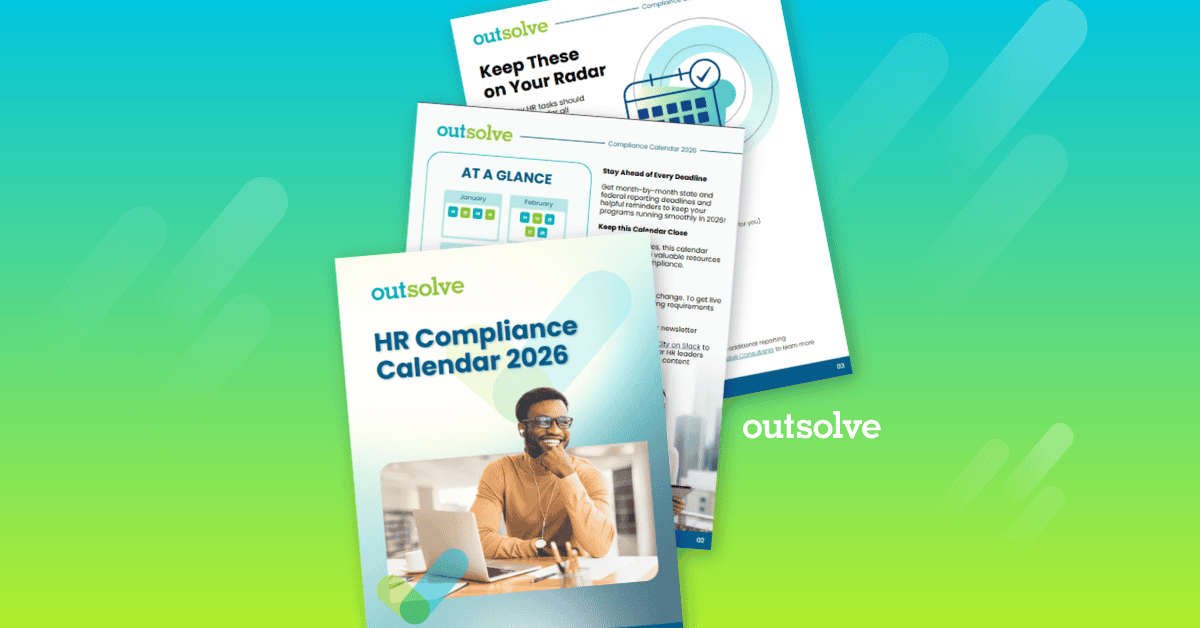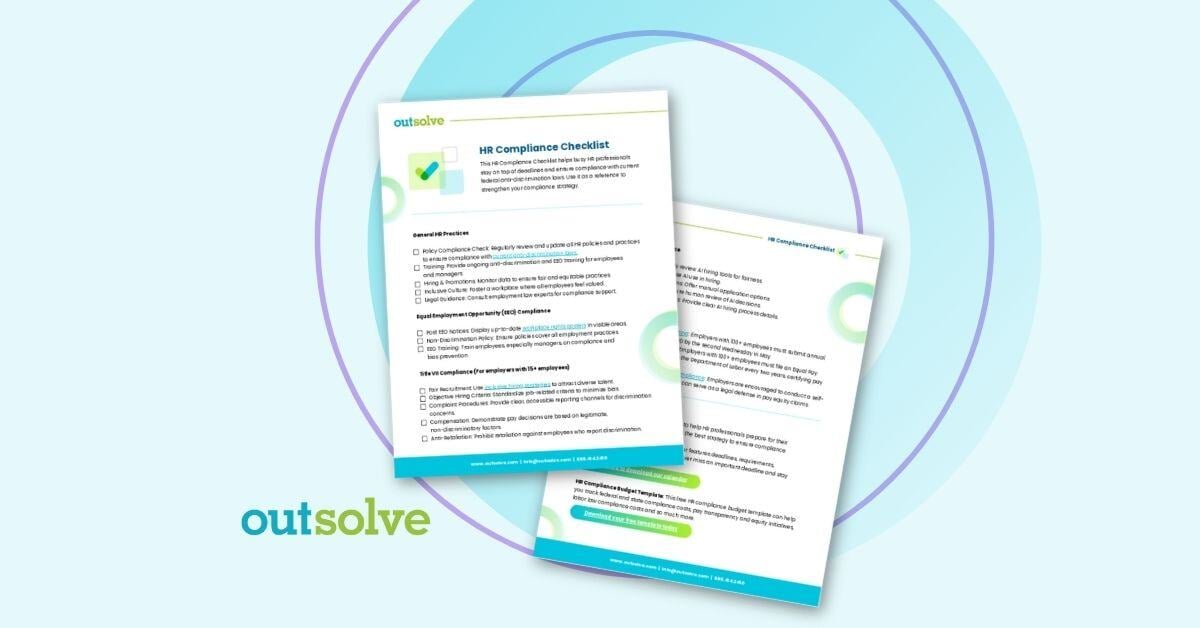3 min read
EEOC Says Independent Study Confirms Pay Data Collection is Key Tool to Fighting Discrimination
![]() OutSolve
:
Jul 29, 2022 8:00:00 AM
OutSolve
:
Jul 29, 2022 8:00:00 AM
%20(3).jpg)
Expert Panel of the National Academies of Sciences, Engineering, and Medicine Concludes that the EEOC’s Pay Data Collection Completed in 2020 Could be Used to “Prioritize Investigations and the Allocation of Resources”
The U.S. Equal Employment Opportunity Commission (EEOC or the Commission) welcomed the report by the National Academies of Sciences, Engineering, and Medicine (National Academies) issued today, which studied the EEOC’s historic, first-time collection of pay data from certain private employers and federal contractors completed in 2020. The study finds that the data EEOC collected may be used effectively by the agency to help focus its resources to identify pay discrimination and offers short-term and long-term recommendations for improving pay data collection by the agency if undertaken in the future. The National Academies study was commissioned by a unanimous vote of the bipartisan Commission in 2020.
“The study confirmed what we at the EEOC have long known – collecting and analyzing pay data can be a useful tool in preventing and combating pay discrimination in American workplaces,” said EEOC Chair Charlotte A. Burrows. “The National Academies’ rigorous examination of the Commission’s historic first pay data collection validates our efforts to collect and use compensation data to achieve pay equity in our nation.”
Specifically, the study finds:
- Collecting pay data is necessary to assess pay practices and differences in compensation by sex, race, and ethnicity.
- The data the EEOC collected is unique and no other federal data collection captures the same information from private-sector employers.
- Response rates from employers submitting pay data were about 90% for this historic, first-time data collection, covering approximately 70,000 employers and over 100 million workers in each collection year, even though EEOC was not able to identify every eligible firm.
- Pay data would enable the EEOC to pursue a more data-driven approach to the investigation and resolution of discrimination charges and could be used to help prioritize investigations and the allocation of resources; identify systemic discrimination; and analyze national, regional, and industry-based pay gaps.
- To improve the EEOC’s ability to enforce the law and address pay disparities, the EEOC should expand and strengthen its data collections. It recommended several short- and long-term improvements that would not only enhance the reliability of any future pay data collection but would also make it easier for employers to produce the information.
As an example of the data’s potential use, the National Academies’ review of the 2018 data revealed some unnamed employers in the Silicon Valley technology sector that have significant race and gender disparities compared to their industry counterparts that are worthy of further examination. For example:
-
One employer had a -51.3% pay gap for Black men compared to white men in the professionals job category;
-
Another employer had a -52.3% pay gap for Hispanic female professionals relative to white male professionals; and
-
A third employer had a -52.4% pay gap for Asian female technicians compared to white male technicians.
EEOC Chief Data Officer Dr. Chris Haffer said, “The report released by the National Academies today is a scientifically sound body of work. Its comprehensive analysis and data-driven recommendations provide strategic direction for how to improve the collection of compensation data and align with many of the needs the EEOC has already identified and begun addressing as part of the agency’s modernization of its EEO data collections and data analytics.”
Because lack of access to pay data has been a longstanding barrier in the efforts to enforce federal laws prohibiting pay discrimination, the EEOC in 2016 voted to collect pay information from certain private sector employers and federal contractors. Although the next Administration stayed the collection of pay data, a federal court rescinded the stay, and the EEOC completed its collection of 2017 and 2018 pay data under court order in 2020.
Given the unique circumstances of the collection and the importance of pay data for enforcement purposes, the EEOC contracted with the National Academies in 2020 to study the pay data collected from private employers, recommend the most effective uses for the pay data, and identify areas of improvement for future collections. The National Academies’ Committee on National Statistics (CNSTAT) assembled a distinguished panel of experts with a variety of relevant expertise and perspectives to conduct the assessment. The panel held public meetings to collect input from stakeholders, including worker advocates, employer representatives, and state and federal agencies and held closed internal meetings to allow the panel to deliberate and formulate its final report. The report is available on the National Academies’ website here. The National Academies’ webinar about the report will be held on August 2 from 1 pm – 3 pm (ET), and people can register here.
Chair Burrows added, “Pay discrimination continues to be a significant impediment to economic fairness for millions of workers, which, in turn, harms the nation. Yet pay discrimination is hard to fight, because it’s hidden from view. This study confirms that federal pay data collection could be a unique and critically important resource for helping the Commission better identify and combat pay discrimination. The report from the National Academies, together with input from employers, employees, unions, and the public, will help inform the Commission’s decision-making in this area going forward.”
The National Academies of Sciences, Engineering, and Medicine provide independent, objective advice to inform policy with evidence, spark progress and innovation, and confront challenging issues for the benefit of society. CNSTAT was established in 1972 to provide an independent review of federal statistical activities. Its members include experts in statistical and computational methods, survey research, economic, social, and demographic measurement and other relevant fields, who serve pro bono for three-year terms. CNSTAT accomplishes its mission by developing and overseeing consensus studies, workshops, and other activities to review and evaluate statistical programs, methods, measures, and data sources that are used to create national statistics.
For more information on how to analyze pay at your organization, please contact OutSolve at info@outsolve.com or 888.414.2410.
Founded in 1998, OutSolve has evolved into a premier compliance-driven HR advisory firm, leveraging deep expertise to simplify complex regulatory landscapes for businesses of all sizes. With a comprehensive suite of solutions encompassing HR compliance, workforce analytics, and risk mitigation consulting, OutSolve empowers organizations to navigate the intricate world of employment regulations with confidence.
Weekly OutLook
Featured Posts

New Year, New Deadlines: 2026 HR Compliance Calendar

outRageous HR: Plan Now or Pay Later
Related Posts

Refreshing Your I-9 Tools and Process to Stay Compliant
Form I-9 is a federal requirement that carries real consequences if handled improperly. With increased scrutiny on immigration by the current...
.png)
New Year, New Risk: Why Federal Contractors Can’t Hit Snooze
Lean in to disciplined, data‑driven compliance

An HR Year in Review: Key Updates in 2025
The unpredictability of 2025 has been an uphill trek for HR teams across the U.S. This year brought substantive employment compliance changes to...
.gif?width=728&name=Leaderboard%20Template%20(2).gif)
